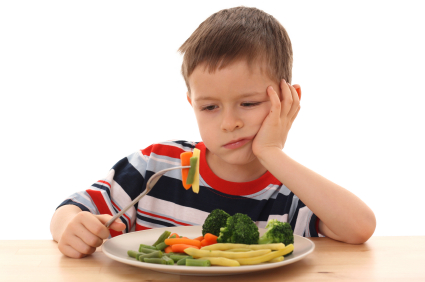As I write this, a can of diet soda sits open on my desk (where I am eating my lunch) and I am fighting the urge to supplement my lunch with a bag of chips out of the vending machine. The reusable, BPA-free glass I keep at my desk for ice water sits neglected, as does the apple I brought in my lunch. So why, if I have an apple sitting right there, am I tempted to visit the vending machine for chips? New research suggests that the blame could lie with that can of diet soda.
 The study, made available online ahead of publication (1), found that from a very early age, people associate sweeten drinks with salty and higher fat foods such as pizza and French fries (or chips). Perhaps partly as a result of this association, young people (ages 19–23 years) viewed unfavorably the pairing of a sweetened drink with raw or cooked vegetables. The test subjects showed strong reactions (either positive or negative) to the pairing of sweetened drinks with certain foods. In contrast, water didn’t evoke strong any reactions indicating that it was viewed as reasonable complement to most food.
The study, made available online ahead of publication (1), found that from a very early age, people associate sweeten drinks with salty and higher fat foods such as pizza and French fries (or chips). Perhaps partly as a result of this association, young people (ages 19–23 years) viewed unfavorably the pairing of a sweetened drink with raw or cooked vegetables. The test subjects showed strong reactions (either positive or negative) to the pairing of sweetened drinks with certain foods. In contrast, water didn’t evoke strong any reactions indicating that it was viewed as reasonable complement to most food.
Next the researchers turned to very young children’s (ages 3–5) acceptance of raw vegetables (carrots and red bell pepper) as a snack when paired with either a sweetened drink or water. They found that the children would consume more sweetened drink than they would water (not surprising to anyone who has been around children). They also found that children ate more vegetables when they were served water as a drink. There was no correlation between the amount of sweetened drink the children consumed and amount of vegetables they ate, which suggests that even limited intake of a sweet drink decreases the amount of vegetables eaten.
The researchers acknowledge that there are several possible explanations as to why there were more vegetables eaten with water than with a sweetened drink. These included things such as the children’s palates not liking certain flavor combinations or the children not expecting vegetables in combination with a sweetened drink (i.e., they are not used to eating vegetables with sweet drinks). Another possibility is that the taste of a sweetened drink primes the palate to anticipate the type of food that is regularly paired with this type of beverage, and since this is not likely to be carrots and bell peppers, these choices might not seem as appealing.
The study brings up some interesting questions. What if water was the default beverage choice offered at daycares and schools as well as fast food restaurants? What if we offered water with meals at home? Would some of the fussy eating parents deal with be eliminated if they replaced apple juice with water at snack time?
I promised my kids I would take them to a park for a picnic tonight. I know they are hoping for lemonade, but I might just pick up a couple bottles of water and then sit back and see if they eat more vegetables than normal. As for me? I still have an open can of diet soda on my desk, but I have managed to resist the call of salty potato chips and I have eaten my apple.
Reference
- Bettina Cornwell, T., & McAlister, A. (2012). Contingent Choice: Exploring the Relationship Between Sweetened Beverages and Vegetable Consumption Appetite DOI: 10.1016/j.appet.2012.05.001
Kelly Grooms
Latest posts by Kelly Grooms (see all)
- Avoid the Summertime Blue-Greens— Know about Cyanobacteria Before You Hit the Water - July 8, 2025
- Growing Our Understanding of Triple-Negative Breast Cancer in Sub-Saharan Africa: Why Comprehensive Population Data Matters - June 5, 2025
- Measles and Immunosuppression—When Getting Well Means You Can Still Get Sick - April 17, 2025
